Lexus invested roughly one billion dollars into the development of the LS400, the predecessor to my LS430. The LS400 changed the world of luxury cars by putting Lexus on the map as a serious competitor to Mercedes-Benz and BMW, whom Lexus was aiming squarely to beat. The LS400 was a very hard act to follow, and fortunately Lexus scored very well again with the LS430, renowned for its reliability in all years it was made. Many customers report that their LS430 can easily achieve 300,000 miles without major repairs.
The recommended timing belt change interval for the LS430 is every 90,000 miles. When I purchased mine, I asked the seller – who was the second owner – if he had changed the timing belt. He noted he had not. The car had 185,000 miles on it, so I figured it was due for its second timing belt change. I informed him that this would negatively affect the price, and saved myself roughly $1,000 from his asking price.
I wanted to replace the timing belt, water pump, and timing pulleys as a complete timing job, and found that the LS430 is one of the easier platforms for replacing the 3UZ-FE engine’s timing belt. The 3UZ-FE is an interference engine, and I’ve read that it’s a bit twitchy and sensitive to mis-timing. An interference engine can be effectively destroyed if the timing belt breaks or slips, as the valves will slap into the pistons. Due to the cost of rebuilding or replacing the engine, the car would be a total loss if the timing belt failed. I decided before driving the car any further than I already had, which was actually several thousand miles over 2 oil changes, that I should absolutely change the timing belt!
Amazingly when I opened the timing cover to replace the belt, I found that the belt was most likely original, with 193,400 miles on it! This means that the water pump, idlers, and tensioner were the originals too… and all 21 years old.
This was my first time changing a V8 timing belt of any kind, let alone on an interference Toyota engine but I know that timing belts should never look like the picture below… cracked, abraded, and running on borrowed time for sure.
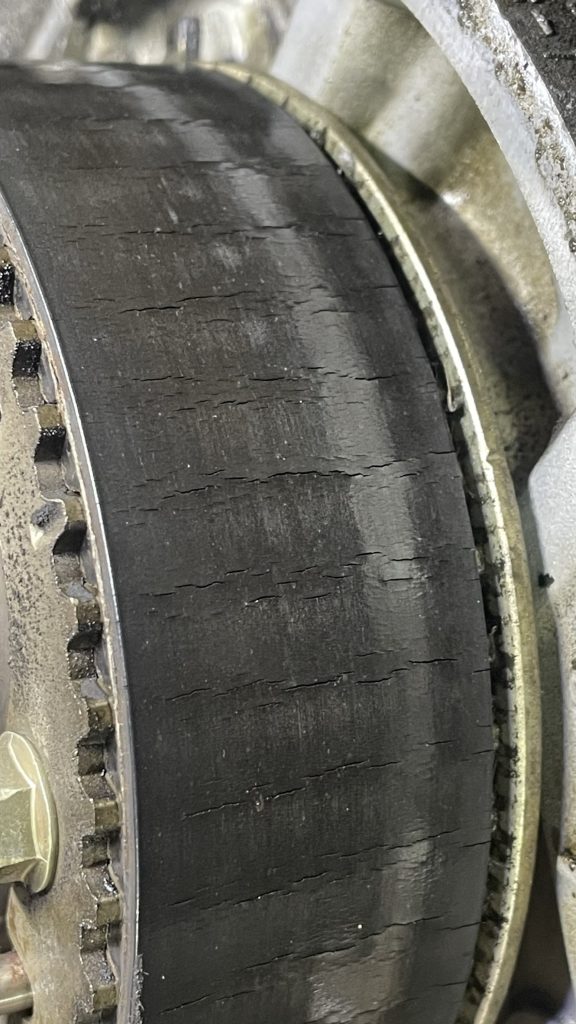
Zooming out from the picture above, showing the right-side cam pulley with this amazingly long-lasting belt – even though it’s getting closer to failure. Toyota’s engineering is amazing, and their belts are very high quality. 21 years and almost 200,000 miles is pretty awesome.
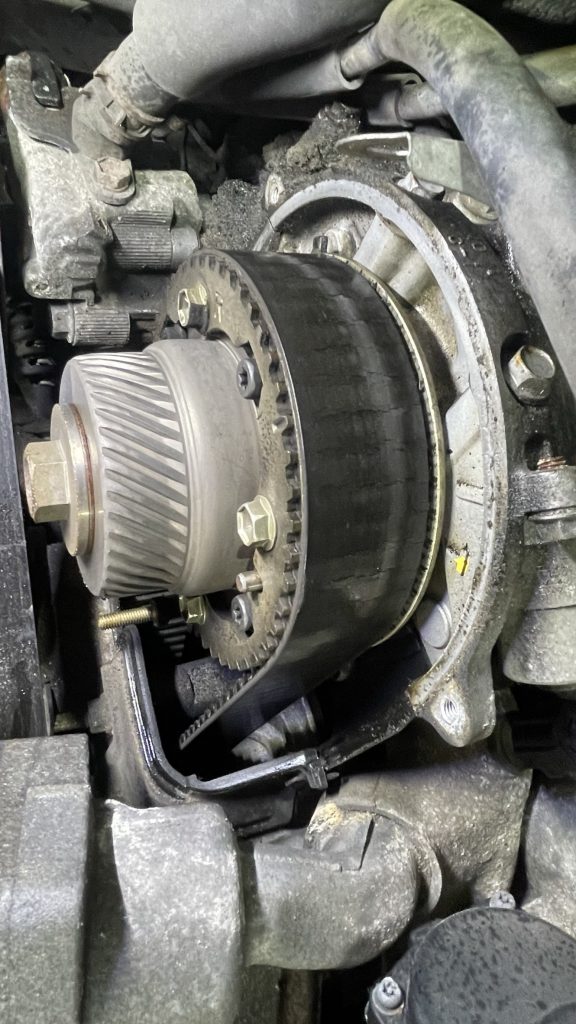
Here’s the front of the engine most of the way into getting at the timing belt. Once the belt was off, I replaced all pulleys and tensioners shown with the orange rings in the middle near the bottom of the picture below.
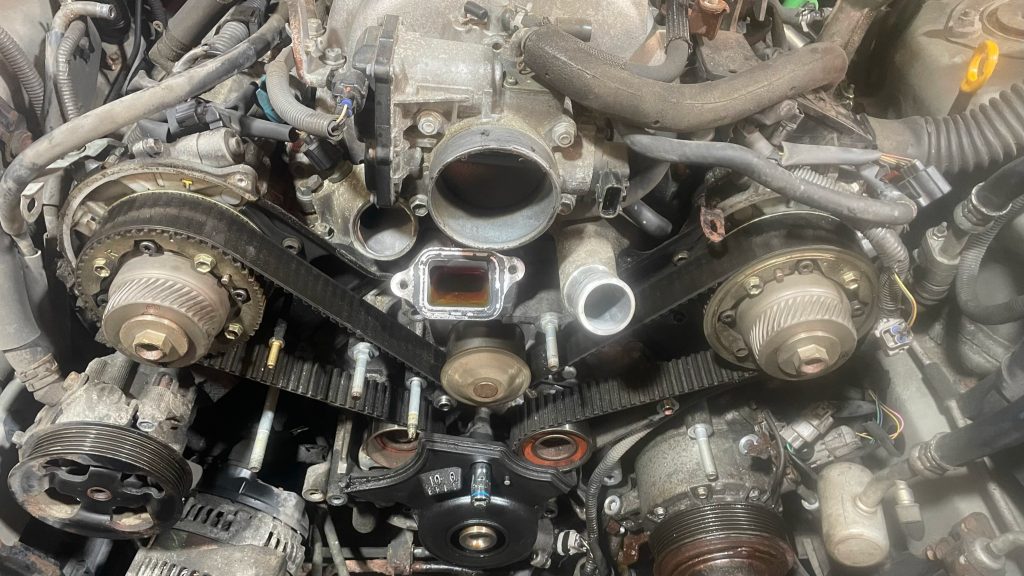
I was amazed I didn’t need a puller to remove the crankshaft pulley, since it had never been off of the engine to my knowledge, and this car spent the first part of its life in Michigan where the winters have given parts of the underside, transmission inter-cooler tubes, power steering tubes, and other typical components, some higher-than-normal levels of rust.
Based on the color of the coolant, it looks like someone might have added green type coolant. Only Toyota’s formulated Red (diluted to Pink) type long-life coolant should be used, and that’s what I used to refill the cooling system.
It took me about 7 hours to replace this timing belt and water pump, but I also changed the engine oil and filter, as well as the serpentine belt and its tensioner.
Local estimates for the timing belt replacement alone are between $1,500 and $1,800, with an added $500 to $800 to replace the water pump.
Between rental of a local garage with a lift, the Aisin TKT-021 timing belt and water pump kit that comes with original OEM Toyota (Lexus) belt, pulleys and water pump, and other parts and supplies, the job cost me about $550 total.
All buttoned back up, here’s a picture of the engine compartment after the timing belt replacement. Strange how so much work ends up looking like not much has happened, although the engine compartment is a bit shinier and has new snap fasteners holding the beauty covers down.
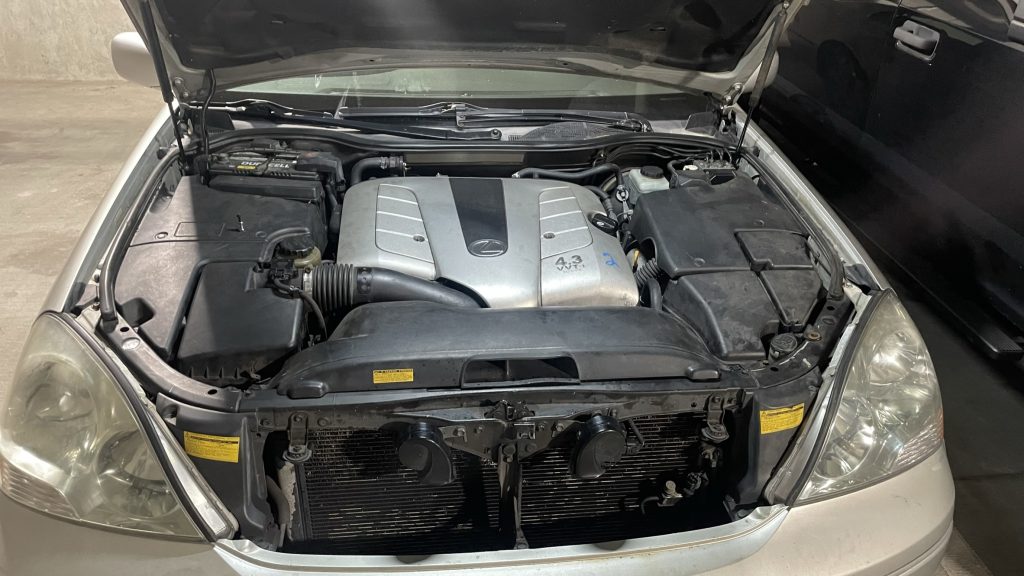
She drives again, I didn’t “crater” the engine into a bent-valve catastrophe, it feels like she has more power and runs better, but hard to tell objectively… without a more advanced scan tool anyway. The car needs a wash and I can see in the post-repair picture below that there’s a nice dirty hand print below the passenger headlight, and the windshield really needs some cleaning attention. My goal is to get 400,000 miles out of this vehicle, so it’s not even half way through its life. In future it may need valve covers and catalytic converters, but for now, it’s ready for road trips and I don’t have to be concerned about that amazing but aged timing belt anymore.
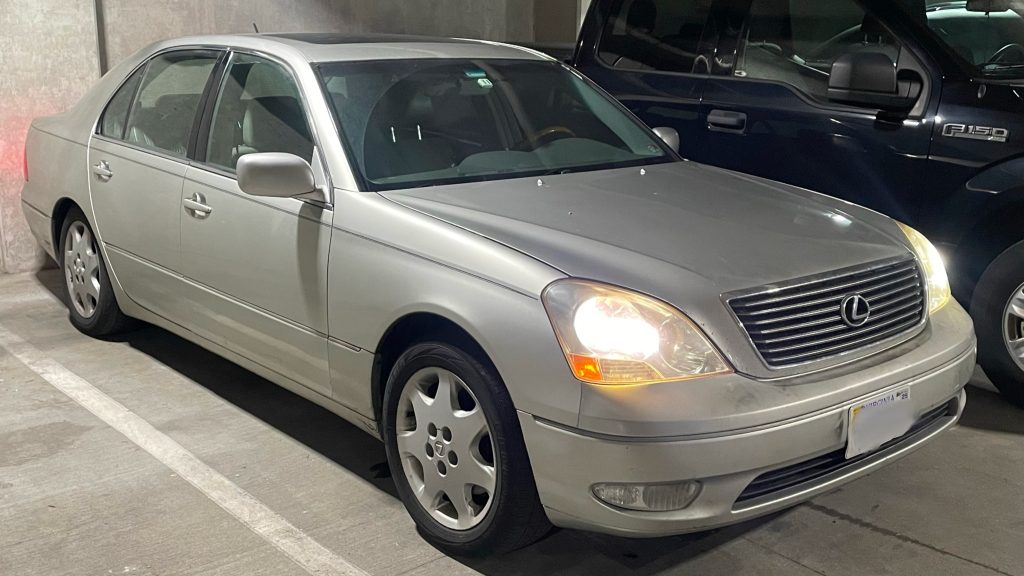
Leave a Reply